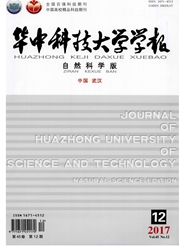

 中文摘要:
中文摘要:
以吸附一凝聚理论为基础,采用氮吸附法研究聚丙烯纤维混凝土在不同温度下的孔隙结构特征.通过分析试样的吸附一脱附等温曲线特征、孔径分布、比表面积,探讨了高温作用以及聚丙烯纤维对混凝土孔隙结构的影响.试验结果表明:经历不同温度的混凝土,其硬化水泥砂浆试样中均存在两端开口的孔隙,且温度越高开口孔隙的孔径越大,连通性更强.经历高温后,混凝土孔隙结构发生了改变,孔径大于200nm的孔隙数量显著增多,孔径小于50nm的孔隙相应减少,最可几孔径显著增大.经历高温前,聚丙烯纤维混凝土试样的比表面积均小于普通混凝土,最可几孔径则差别不大.与普通混凝土相比,聚丙烯纤维混凝土中小孔分布较少,而孔径较大的孔分布更多.经历高温后,纤维混凝土试样的孔径分布规律和比表面积与普通混凝土接近.
 英文摘要:
英文摘要:
Pore structure of polypropylene fiber concrete at different temperatures was tested deeply with nitrogen adsorption method based on adsorption condensation theory. The impacts of tempera- ture and fiber content on pore structure were studied from analysis of adsorption-desorption isotherm curve, pore size distribution and surface area. Results show that both ends open pores generally exist in hardened cement mortar. The higher the temperature is, the larger the pore size is. After the high temperature, the volume of pore that diameter greater than 200 nm increase signifieantly, and the vol- ume of pore that diameter less than 50 nm reduce accordingly. The surface area of fiber reinforced con- crete specimens are less than ordinary concrete before the high temperature. And the most probable pore is not much different. Compared with the concrete, there are less small pores and more big pores in fiber concrete. Pore size distribution and surface area of fibers concrete are close to ordinary con- crete after the high temperature.
 同期刊论文项目
同期刊论文项目
 同项目期刊论文
同项目期刊论文
 Splitting strength of GGBFS concrete incorporating with steel fiber and polypropylene fiber after ex
Splitting strength of GGBFS concrete incorporating with steel fiber and polypropylene fiber after ex 期刊信息
期刊信息
